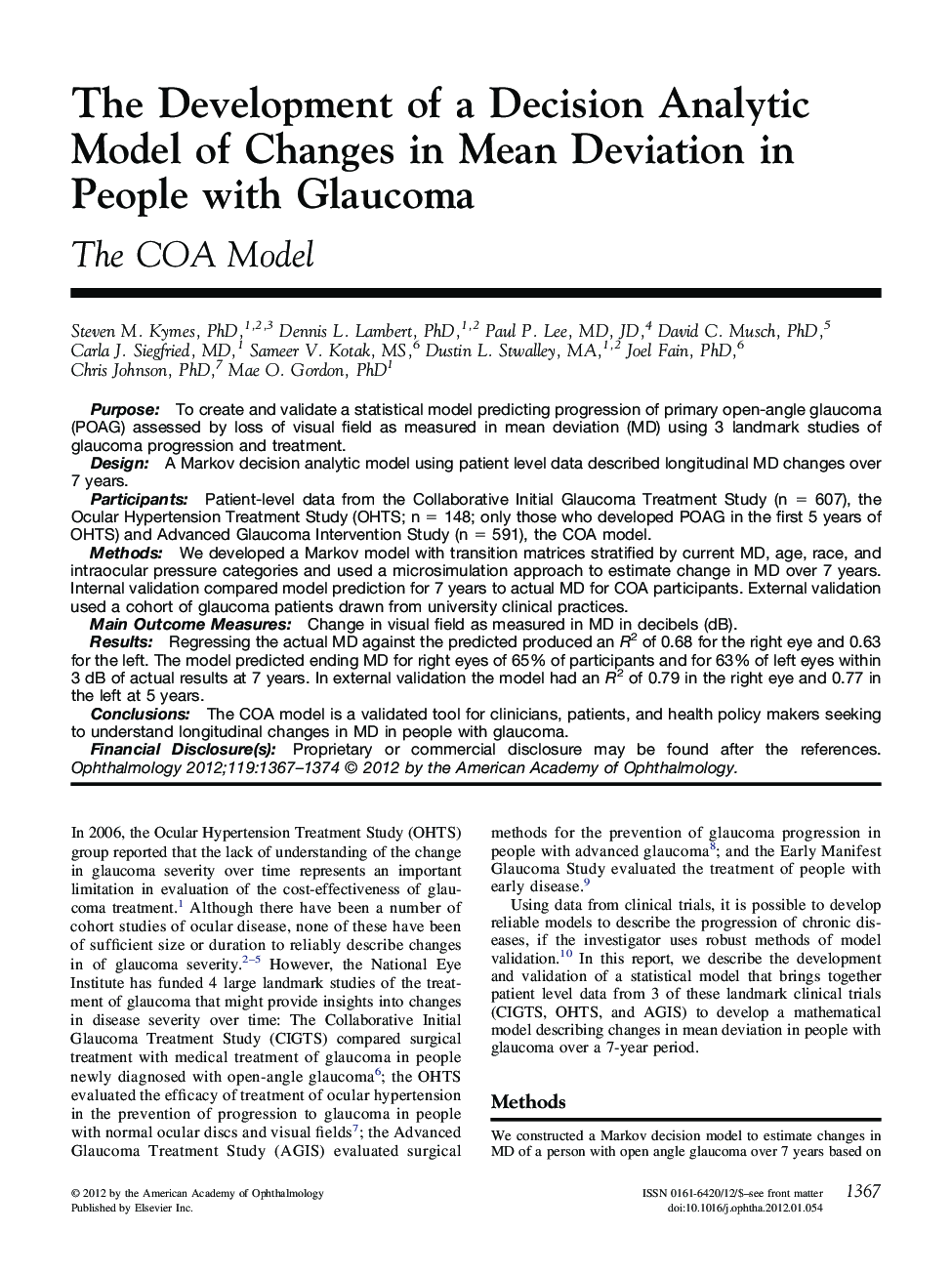| کد مقاله | کد نشریه | سال انتشار | مقاله انگلیسی | نسخه تمام متن |
|---|---|---|---|---|
| 4026886 | 1262444 | 2012 | 8 صفحه PDF | دانلود رایگان |

PurposeTo create and validate a statistical model predicting progression of primary open-angle glaucoma (POAG) assessed by loss of visual field as measured in mean deviation (MD) using 3 landmark studies of glaucoma progression and treatment.DesignA Markov decision analytic model using patient level data described longitudinal MD changes over 7 years.ParticipantsPatient-level data from the Collaborative Initial Glaucoma Treatment Study (n = 607), the Ocular Hypertension Treatment Study (OHTS; n = 148; only those who developed POAG in the first 5 years of OHTS) and Advanced Glaucoma Intervention Study (n = 591), the COA model.MethodsWe developed a Markov model with transition matrices stratified by current MD, age, race, and intraocular pressure categories and used a microsimulation approach to estimate change in MD over 7 years. Internal validation compared model prediction for 7 years to actual MD for COA participants. External validation used a cohort of glaucoma patients drawn from university clinical practices.Main Outcome MeasuresChange in visual field as measured in MD in decibels (dB).ResultsRegressing the actual MD against the predicted produced an R2 of 0.68 for the right eye and 0.63 for the left. The model predicted ending MD for right eyes of 65% of participants and for 63% of left eyes within 3 dB of actual results at 7 years. In external validation the model had an R2 of 0.79 in the right eye and 0.77 in the left at 5 years.ConclusionsThe COA model is a validated tool for clinicians, patients, and health policy makers seeking to understand longitudinal changes in MD in people with glaucoma.Financial Disclosure(s)Proprietary or commercial disclosure may be found after the references.
Journal: Ophthalmology - Volume 119, Issue 7, July 2012, Pages 1367–1374